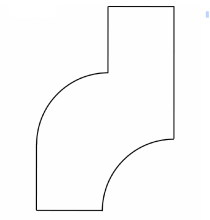Grand Challenges
Grand Challenge ONE
PROBLEM:
Notes:
This problem is the first one we tackle in the course, “Quantitative Problem Solving” at Baldwin Wallace University. The course has no math prerequisites. We have theater majors, business majors, history majors, and a variety of others.
The problem is not solved with math formulas, but by thinking, wondering, and exploring. It takes few weeks to finally solve it. The students get a lot of encouragement, coaching, and advice from the professors, but it is the students who figure it out. They figure it out by developing a fundamental understanding of probability. We never discuss or use factorials or formulas. They do what makes sense to them. They eventually say, “Oh, I get it, that makes sense.” When they finally solve it, they are proud of themselves because they had no idea how to start and they eventually figured it out. One student said, “I had no idea how smart I was!” This is understandable. If the teacher doesn’t challenge students to struggle with hard problems, they’ll never have the opportunity to experience success after a long struggle. This so important. This is part of being a human being. Struggling and then succeeding. A good example of this is an infant learning how to walk. It takes months, but they eventually succeed, and they are so proud of themselves.
Coaching:
If a student has not been asked to solve challenging problems without a formula or a series of steps to follow, tackling a problem like this can be overwhelming and frustrating. It helps to have a coach to provide guide-rails, encouragement, and to ask insightful questions to get the student started on the problem. Sometimes, parents, grandparents, and other relatives can be great coaches. Often a teacher can be an excellent coach. If you or someone you know is interesting in developing the ability to think hard to independently reach a new level of understanding and he/she does not have access to a coach, this is a service we offer over the internet. If you are interested coaching (not someone showing you how to get the answer), fill out this form and we’ll get in touch with you to see if there is a good fit.
Grand Challenge TWO
PROBLEM:
Grand Challenge THREE
PROBLEM:
Grand Challenge FOUR

PROBLEM:
He then mixes up the bags, so you don’t know which bags contain which chips. Your uncle is interested in developing your probabilistic reasoning, so he offers you the chance to select a sample chip before choosing the chip that you get to keep.
The chip that is sampled is not returned to the bag, so if you choose to select a sample chip, the chip that you get to keep will be one of the five remaining chips.
After sampling a chip, you are free to choose the chip you get to keep from any of the three bags. Of course, your uncle will not allow you to look into the bags to see what is inside and you must declare whether you are opting to select a sample chip before removing the first chip and seeing its value.
Do you sample? If you sample, what are you hoping for? What is the optimal strategy for maximizing the probability that you walk away with a $100 chip?
Grand Challenge FIVE
PROBLEM:

Grand Challenge SIX
Grand Challenge Seven
a) two people
b) three people
c) four people
Grand Challenge Eight
Grand Challenge Nine
Grand Challenge Ten
Grand Challenge Eleven



